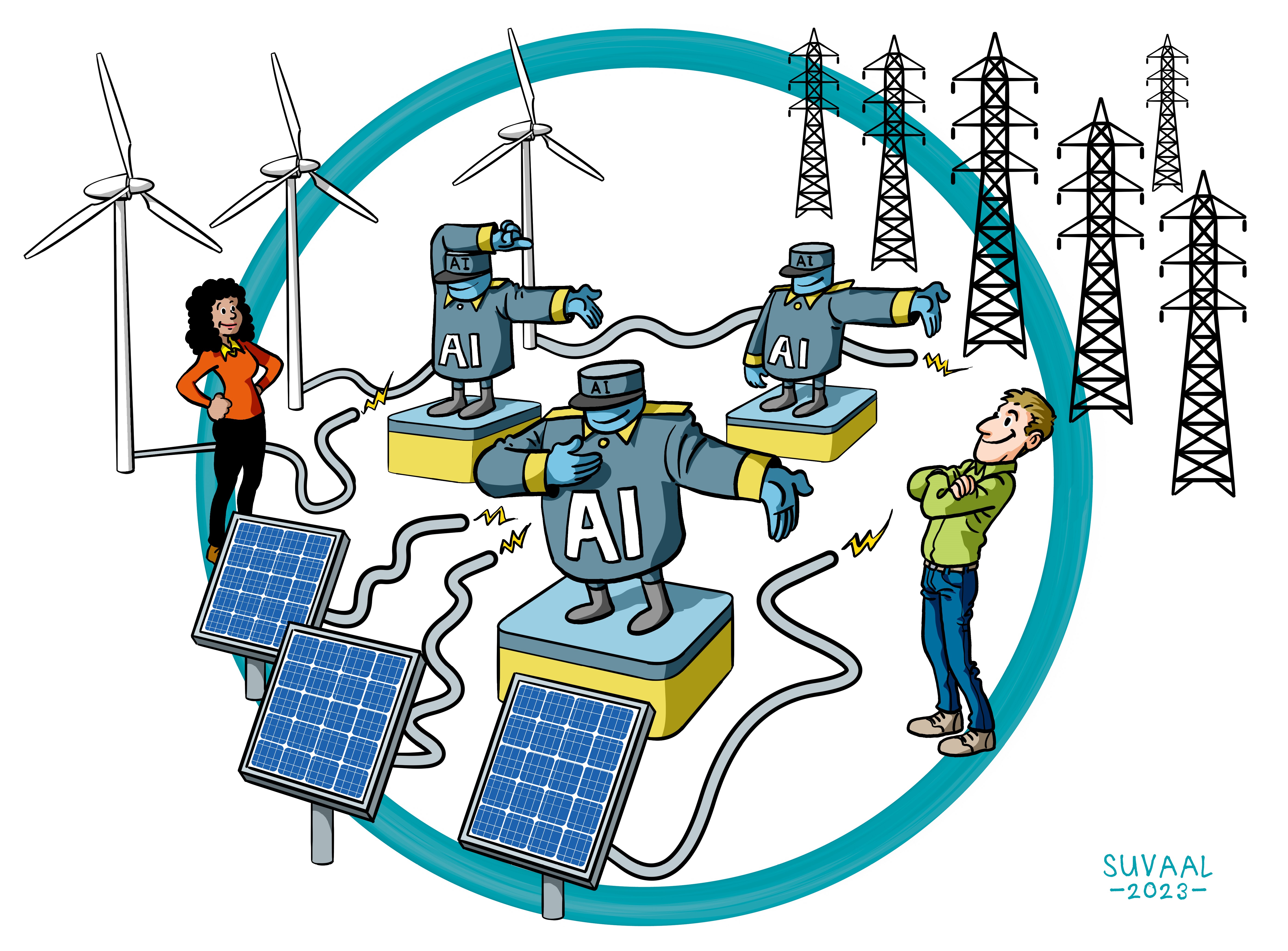ICAI Ai for energy grids
Research Themes: Software Technology & Intelligent Systems, Energy


A TRL is a measure to indicate the matureness of a developing technology. When an innovative idea is discovered it is often not directly suitable for application. Usually such novel idea is subjected to further experimentation, testing and prototyping before it can be implemented. The image below shows how to read TRL’s to categorise the innovative ideas.
Summary of the project
For the energy transition more and more renewable electric energy is being produced, transported and used. This increase is leading to the limits of the transportation capability of the electricity grid. The grid struggles to connect distributed energy resources like solar panels or, electric vehicles through end-users. Solving this capability challenge by investing in new infrastructure alone will not suffice as the network expansion rate is limited due to workforce shortage. Together with distribution system operators Alliander this ICAI lab aims to enhance the transport capability of the distribution grid in The Netherlands by improving the grid operation on the on hand and looking at targeted infrastructure expansions on the other hand. The lab combines the expertise of Alliander, the latest digitalization programs that make grid data available, with the academic expertise on methods from artificial intelligence enabling the labs scientific success and broader global impact.
However, developing and using AI methods for a real-world cyber-physical critical infrastructure is not straight-forward. For example, one of the five challenges the lab addresses is that the real grid has insufficient or false measurements, noise, unclear topology, and other data quality problems. Researchers will be working on how AI methods can be generalized for real-world power system operation and be made robust against unavoidable data quality issues. During pilots it will be tested how the state-estimator scores on accuracy, reliability, repeatability and resilience, and this will be compared with baseline models on fully measured parts of the grid. This increased insight will making the current grid to be used much more efficient, e.g. by lowering safety margins or implementing flex-markets to overcome overloads.
What's next?
The beauty of this ICAI lab is that research results can directly be implemented by Alliander. The outcome will be that new solutions for congestion management, smart charging or flexible grid switching modes can be implemented much faster and with lower effort. As a result, the safety margins can be lowered, leading to a more efficient use of the power grid.
With or Into AI?
Both
dr. Jochen Cremer
dr.ir. Simon Tindemans
prof. dr. ir.
Prof.dr. Peter Palensky
Prof.dr.ir. Zofia Lukszo
prof.dr. Mark Neerincx
dr.ir. Roel Dobbe
prof.dr. Han Lan Poutre
dr Werner van Westering (Alliander)
Faculties involved
- EEMCS
- TPM
